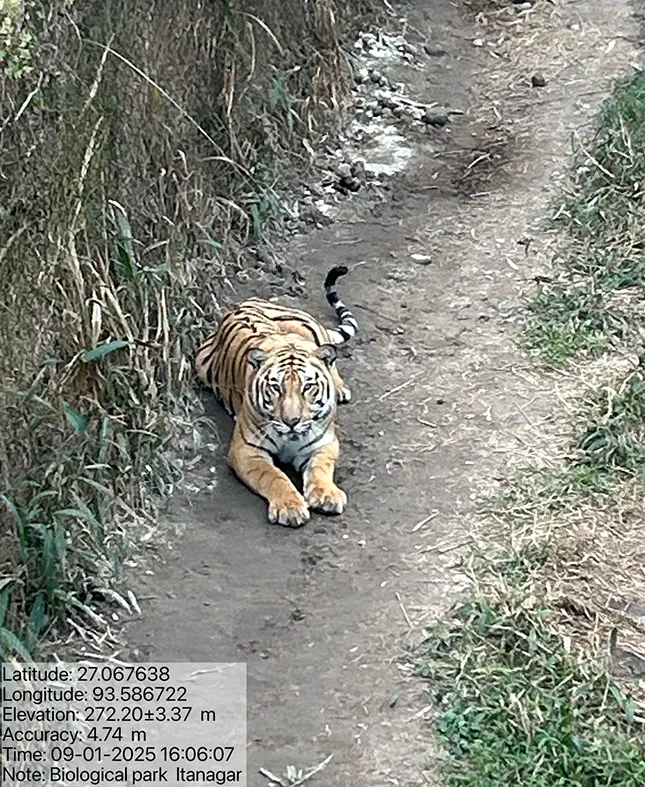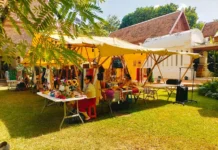[Kara Gambo]
The Itanagar Biological Park is home to a diverse range of flora and fauna, offering a natural habitat to numerous species of animals and plants. Also referred to as the ‘lungs of Itanagar’, the park sits at an altitude of 500 feet above sea level and is 4 kilometres from the Itanagar Capital Region.
Spanning an estimated area of 250 hectares, the park accommodates over 200 animals, and is classified as a tropical evergreen forest.
Initially established in 1978 as a rescue centre in Polo Park, Naharlagun, the facility served as a refuge for displaced and injured wildlife. Due to the increasing number of animals from across the state, the forest department upgraded it into a zoological park and relocated it to Itanagar in 1987. In 2003, the facility was renamed the Biological Park, Itanagar, by Pushp Kumar, a retired principal chief conservator of forests (PCCF), acknowledging the region’s rich biodiversity.
Although the Central Zoo Authority’s master plan proposes78 enclosures, only 28 have been built due to financial constraints. Despite these limitations, the park remains committed to its objectives of wildlife education, recreation, conservation breeding, and rescue and rehabilitation of wild animals.
In an interview, park’s curator Raya Flago revealed that the zoo housed only 5-7 animals, including bears and slow lorises, during its initial phase. “Today, it is home to approximately 200 animals, managed by 75 staff members, including a director, veterinarians, and zookeepers,” he said.
Tigers are one of the park’s main attractions. According to Flago, the zoo housed five tigers when he joined in 2016-17. Over the past decade, a total of seven tigers – four males and three females – have lived in the park, with most dying of natural causes due to old age. A tiger named Takar, who lived for 23 years, came close to the global record of 24 years for tigers. The park vaccinates its tigers every three months to ensure their health.
Recently, the park acquired two tigers from Odisha’s Nandankanan Zoological Park through an animal exchange programme. Among its rescues is Chipi, an 11-year-old female tiger from Anini, and Rocky, a 4.5-year-old male tiger from Sepahijala.
According to CZA guidelines, tigers require 7-10 kilograms of meat daily. Due to the colder climate of Arunachal Pradesh, the park provides 10 kilograms of meat daily, except on Tuesdays, a fasting day that helps the tigers’ digestion process.
Flago addressed misconceptions about zoos, emphasising that the Biological Park serves as a rehabilitation centre for endangered species, rather than as a place of confinement. Rehabilitated animals are released back into the wild when possible, while those unable to survive remain under the park’s care. The park faces challenges, including the degradation of enclosures caused by rust. In 2018, a tiger escaped due to an enclosure that was only 13 feet high falling short of the 16-17 feet recommended by the World Association of Zoos and Aquariums. The tiger was safely recaptured with the help of local authorities.
To raise wildlife awareness, the park organises programmes in nearby villages and provides free vaccinations to livestock within a 5-kilometre radius. Annually, the park attracts 60,000-75,000 visitors and boasts a dedicated veterinary team. Remarkably, the Itanagar Biological Park is the first in India to successfully breed the endangered hoolock gibbon. The first baby hoolock gibbon was born on 5 August, 2008. With fewer than 400 hoolock gibbons remaining in eastern Arunachal, the breeding programme, launched in 2007, is vital for the species’ survival. The park also breeds approximately 28 other animal species.
The Itanagar Biological Park stands as a vital institution for wildlife conservation and protection in Arunachal. Beyond being a tourist attraction, it contributes to biodiversity awareness, endangered species rehabilitation, and conservation breeding. Despite its challenges, the park’s dedication underscores the harmony between humans and nature, offering hope for the preservation of wildlife in the region.




